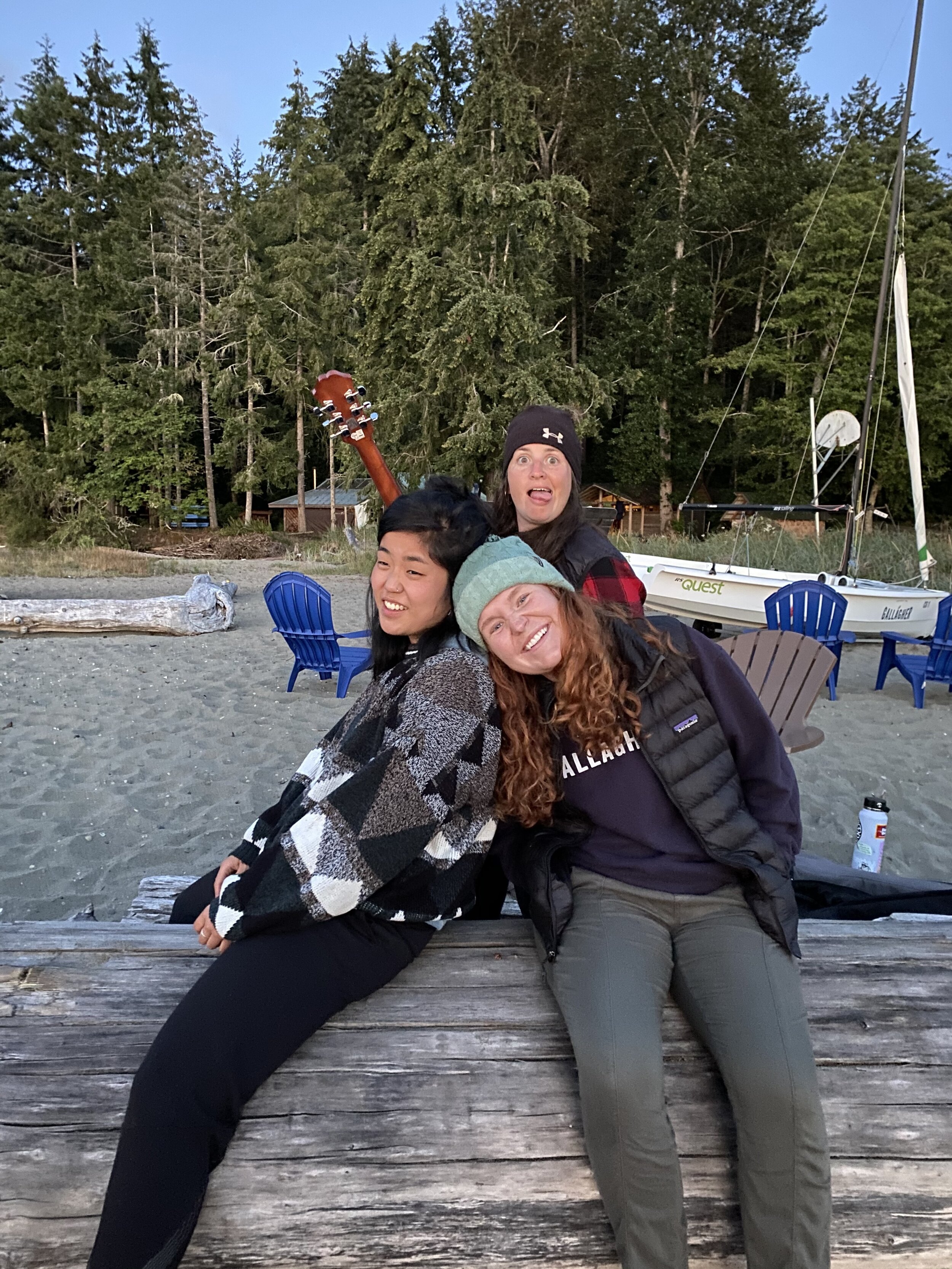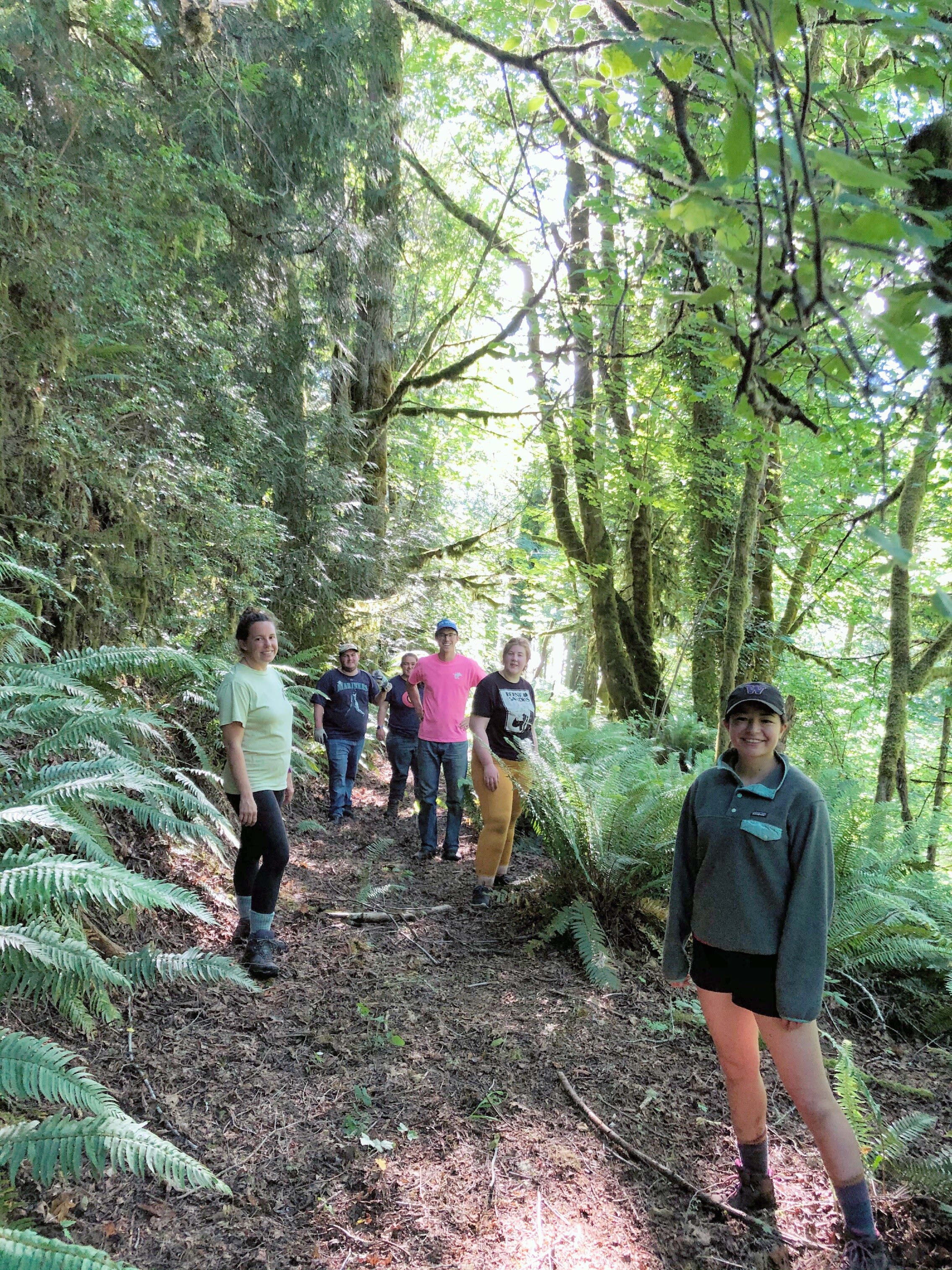By Alison Mohrbacher, Program Director, Camp Gallagher
When early news hit of COVID-19’s presence in Washington state, one of my first reactions was to start doing backwards math, calculating how soon this mysterious pandemic would clear in order to allow what I was looking forward to most this year—the biggest Gallagher summer yet, serving the most campers we would have ever had. Where I pulled the numbers for my backwards math remains a mystery to me. Of course, I knew even less than the experts who knew very little at that time, but I couldn’t bear the thought of Camp Gallagher going a full summer without seeing campers and staff playing, boating, singing, so I kept calculating, hoping, questioning, hoping, counting, hoping, and convincing myself it would work out.
Unfortunately, my imaginary math was wrong, and as we moved closer to the summer and the decision to cancel programming this year became the only possible option, my heart ached for the campers, especially those entering their final year here, but my heart also ached for the place. Camp Gallagher, the physical property, looms large in my heart and mind as a living, breathing entity that has given so much to me and to so many others over the years. While a common refrain during a Gallagher sundown is awe and appreciation for the community that forms amongst a session’s group of campers and staff, and the question of defining “Gallagher” as a community rather than a place is often posed, summers away from the place but with the people have made it very clear to me that the place itself matters. There’s something in the soil, or sand, that makes this place special and, in turn, helps make the community special.
I am still devastated that a larger swath of the community couldn’t return to the place this summer, but I am thrilled that we were able to bring some of our summer staff to the place as members of our small “quarancrew,” a quarantined group dedicated to working on both program and property so that Camp Gallagher is better than ever when our campers can return.
There are definitely times when the absence of the campers hits me (and the others) hard, and our sundowns have seen their fair share of teary eyes—the bummer of it all can’t be denied when we realize that we aren’t just holding an extended and slightly skewed staff training—but during a morning reflection our first week here we challenged each other to remember how lucky we are to have the opportunity to be here, to serve the place, and to continue to work for our campers, even if the result is delayed by a year. Our early analogy was to remember that while an authentic Sicilian-style pizza may be what we really want for dinner and if we compare our frozen pizza to what we had in mind, it is definitely disappointing, but if we judge our frozen pizza against itself instead, it can be pretty tasty and satisfying. Compared to the summer we anticipated, working on the Gallagher “quarancrew” would continue to stay a bummer; compared to letting the Gallagher property and program sit alone and ignored for a year, working on “quarancrew” is awesome.
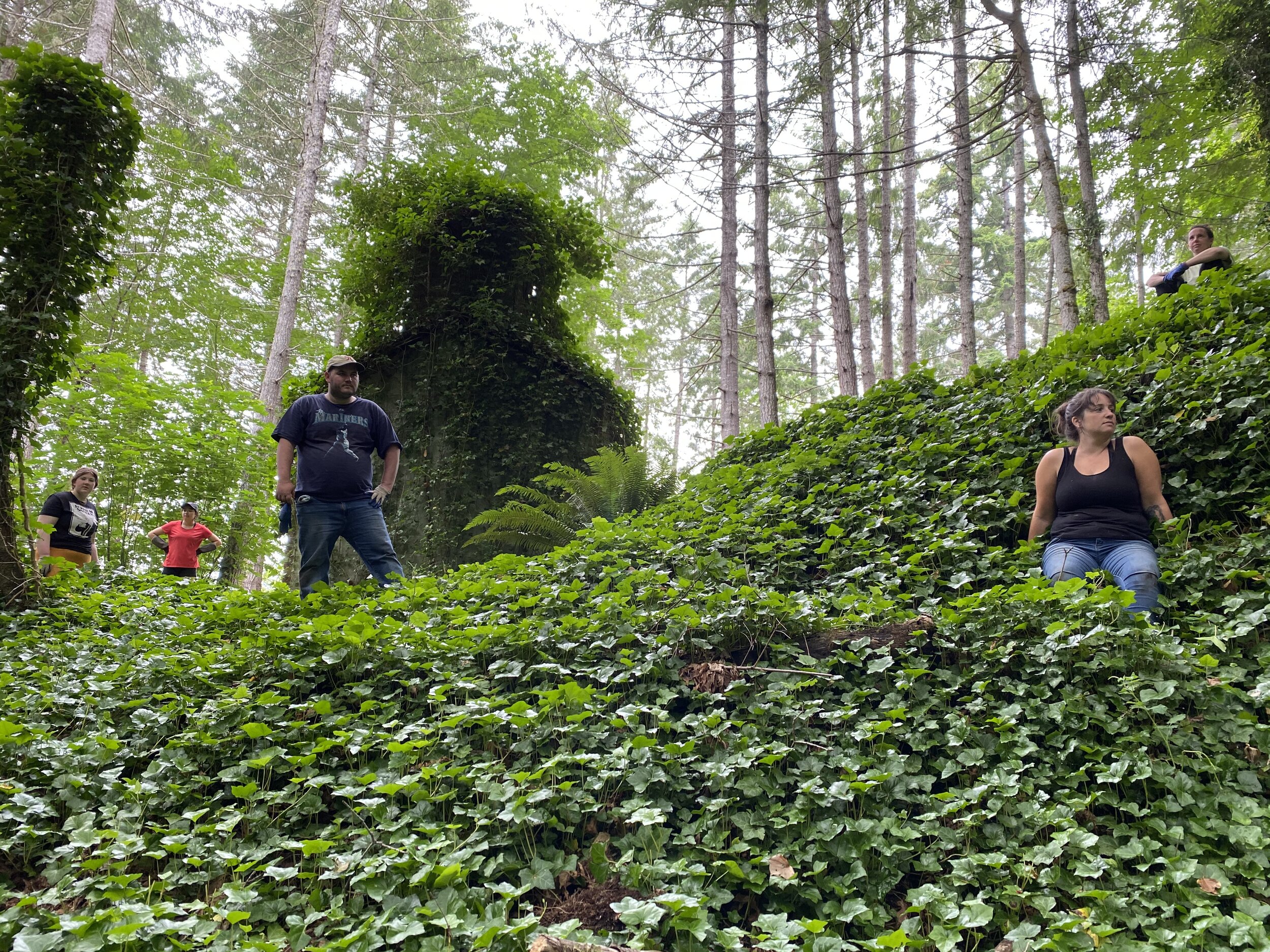

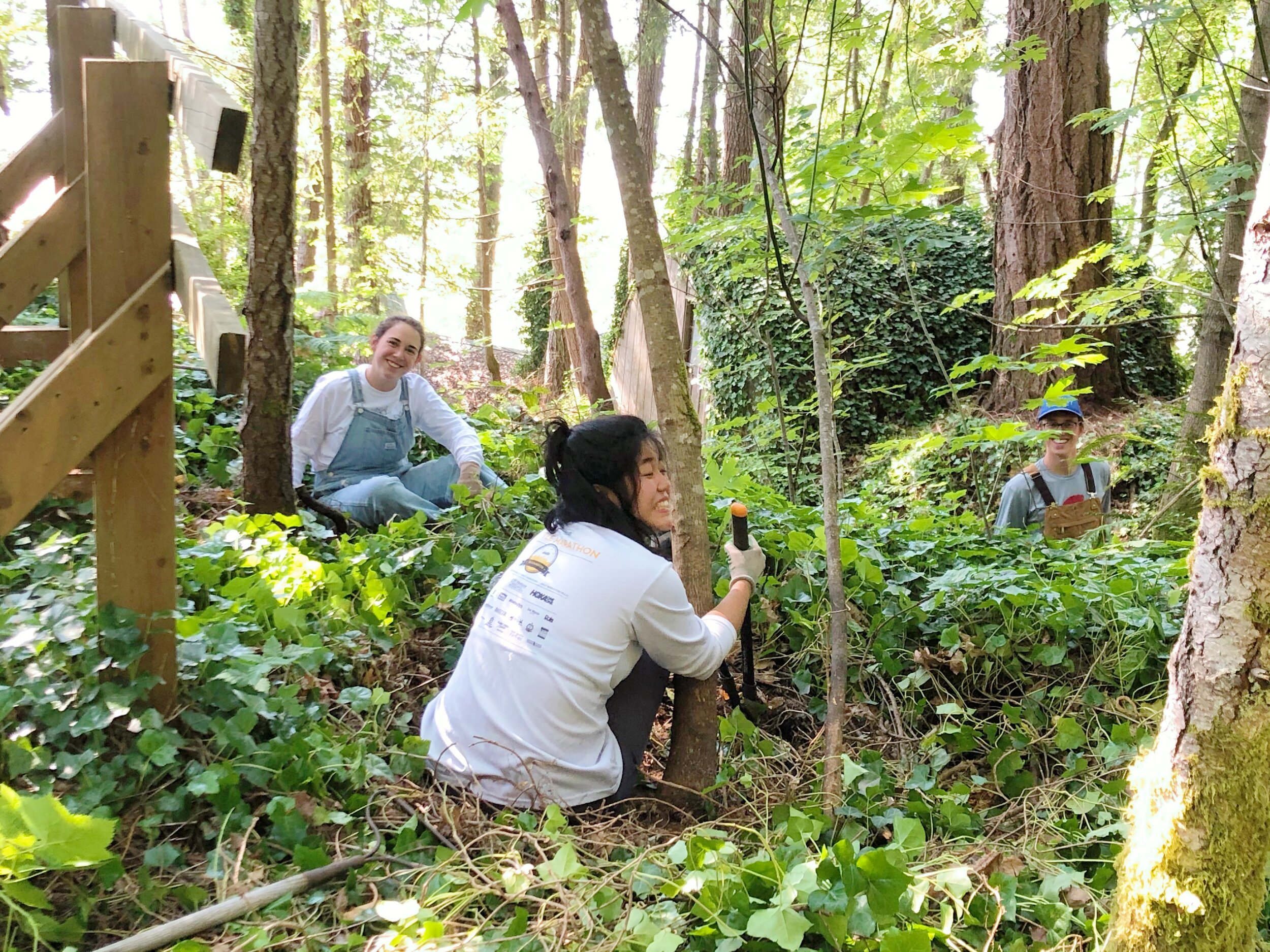

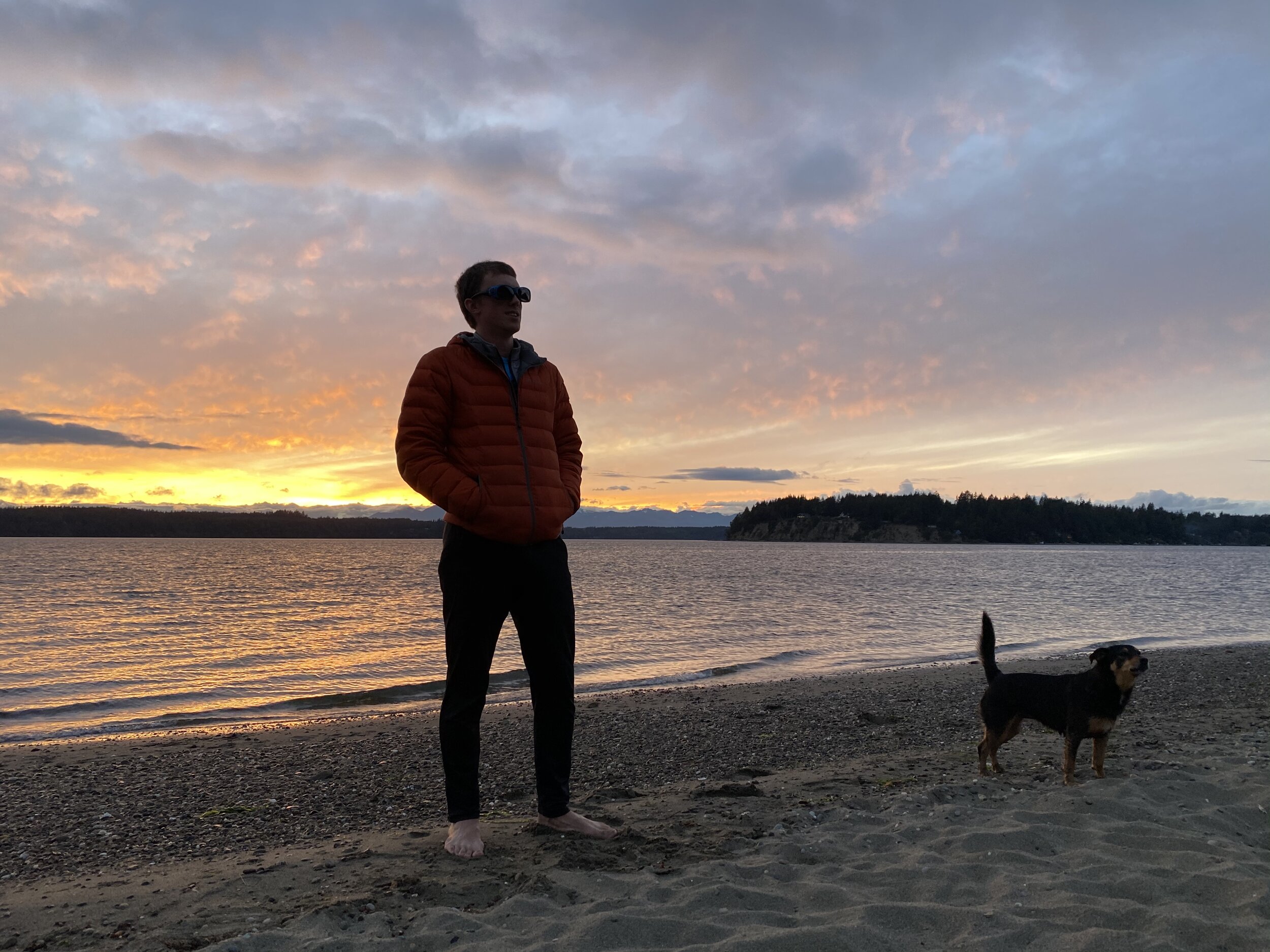
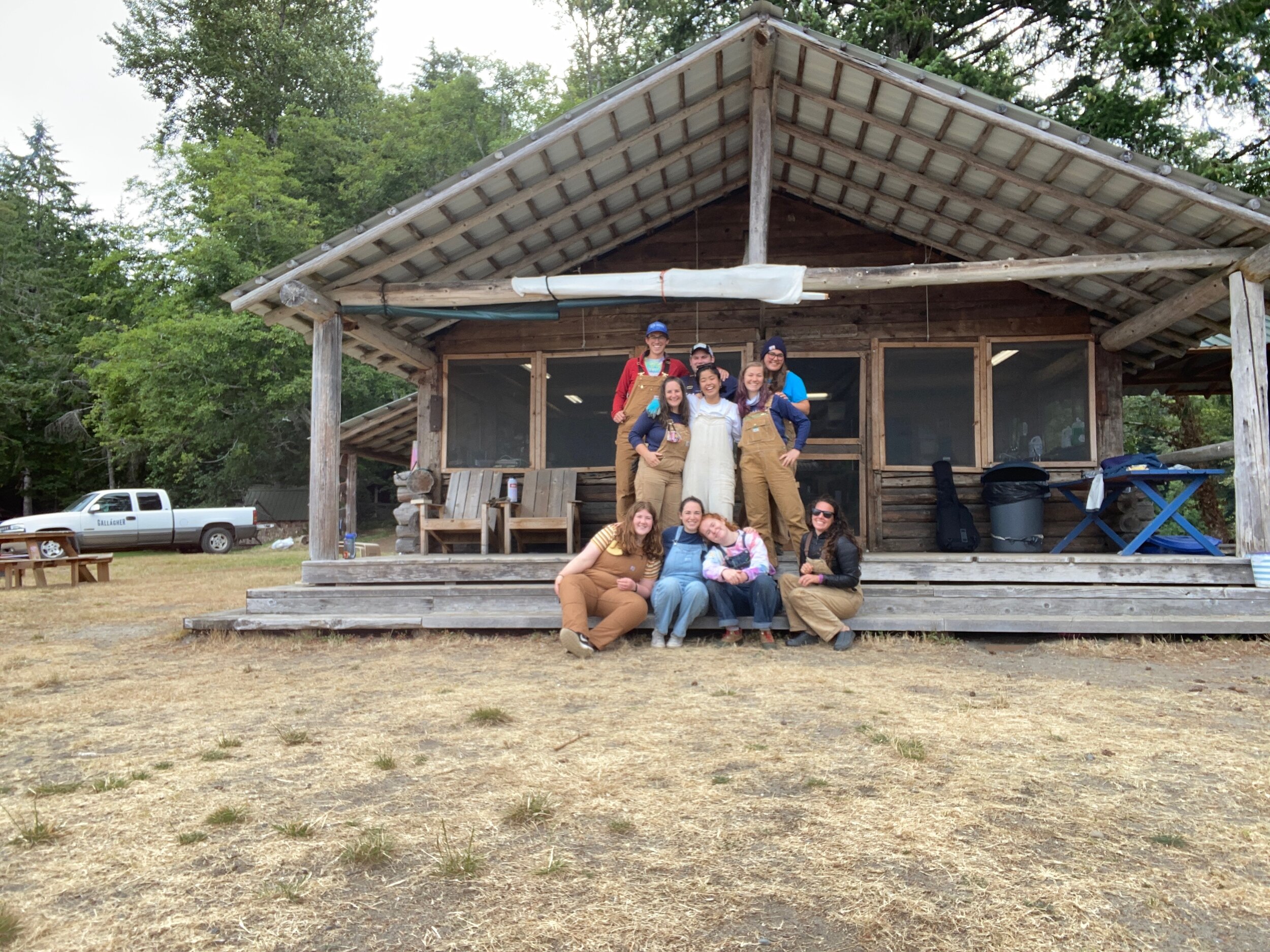
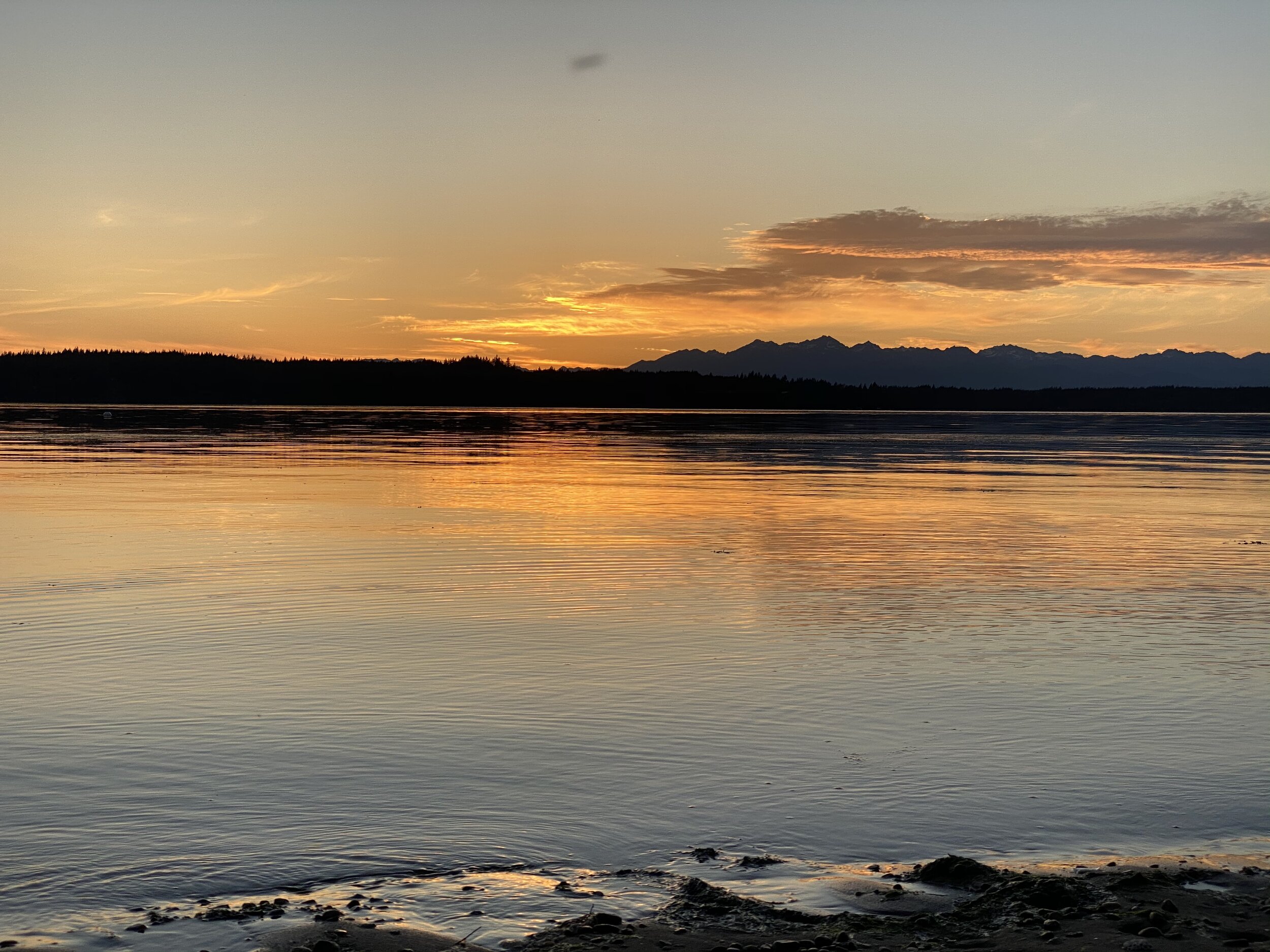
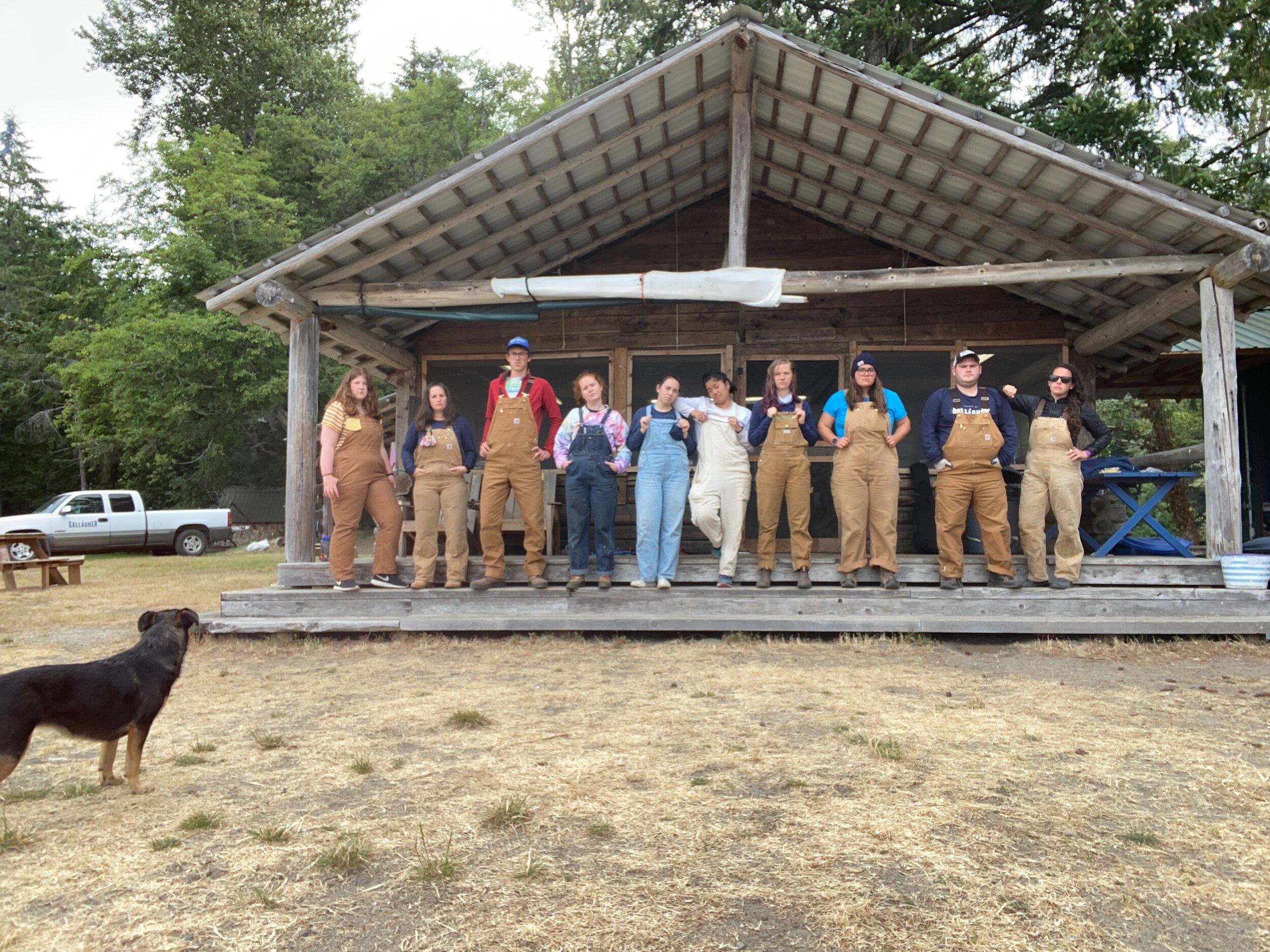
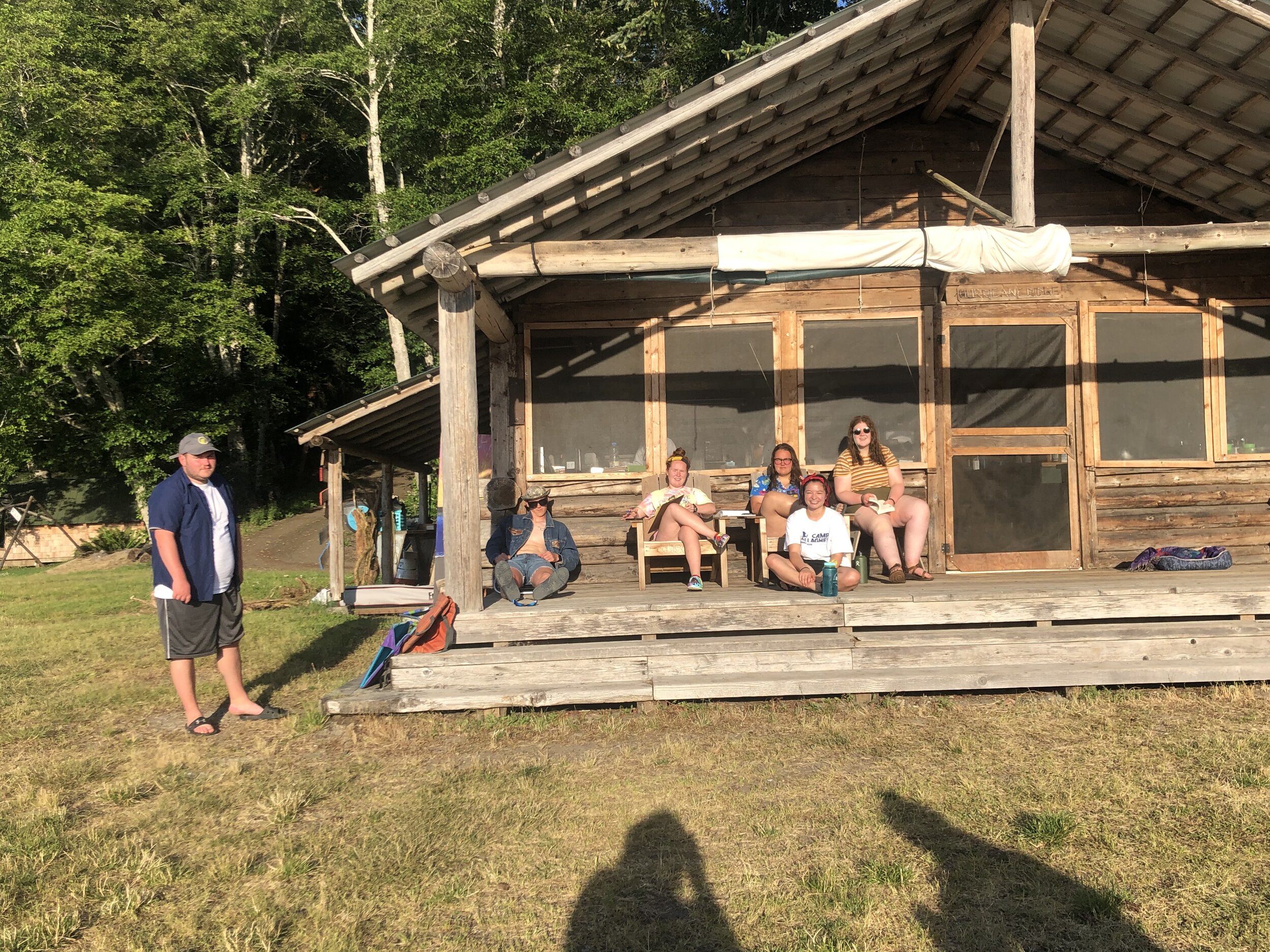
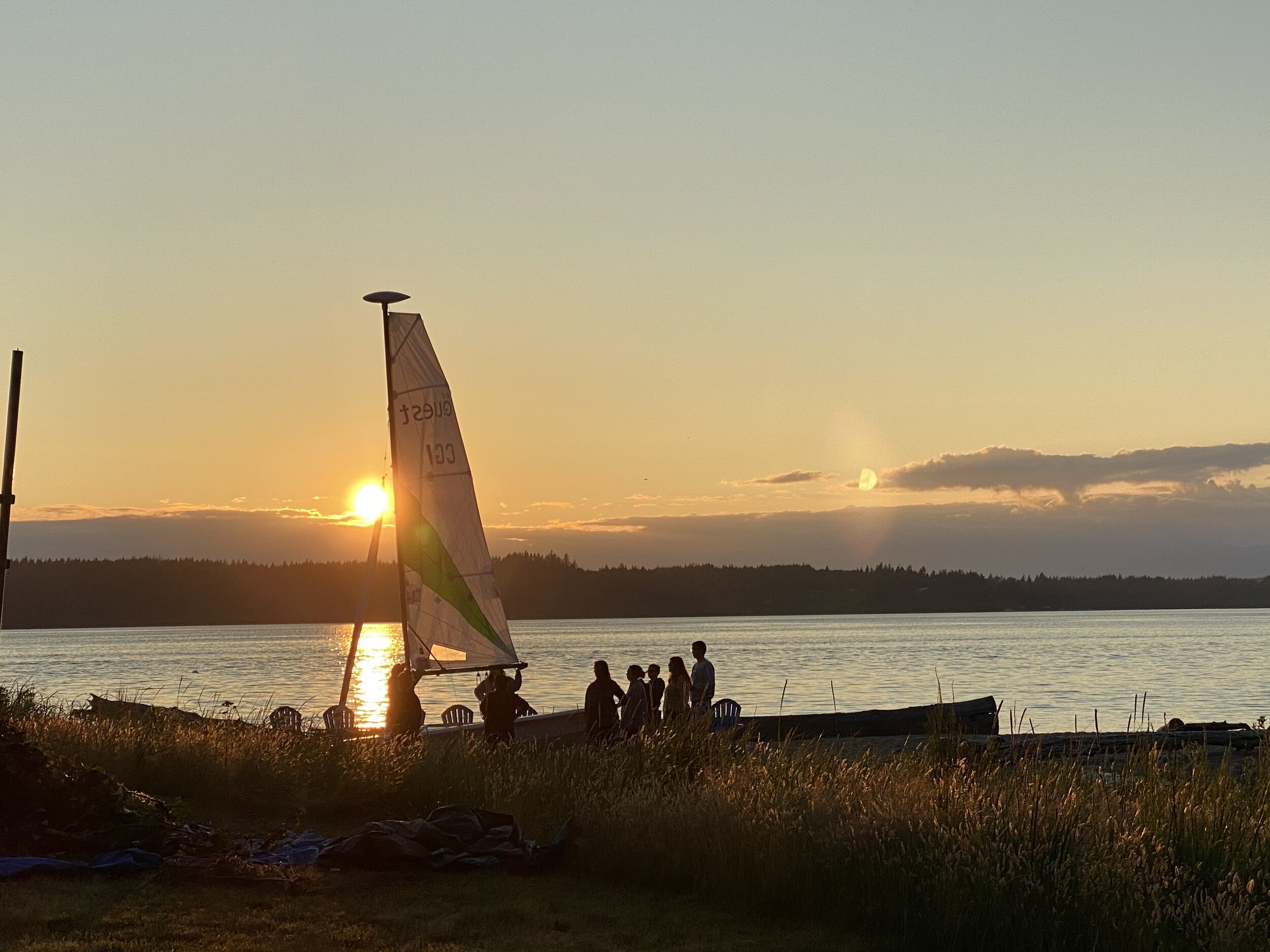
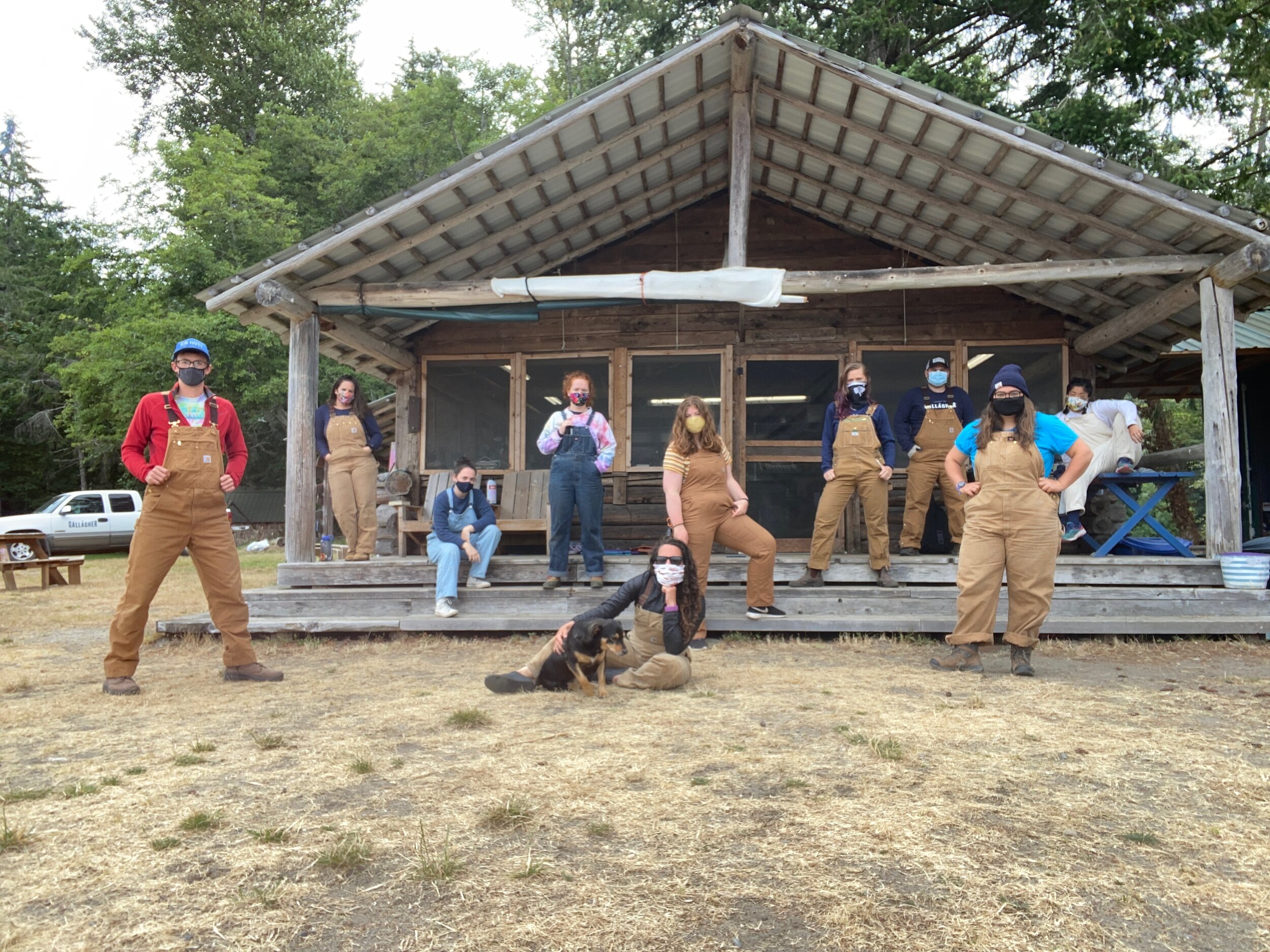
So far, we have primarily focused on removing the invasive English ivy that adorns, and chokes, much of camp with some afternoons and evenings dedicated to other projects like enhancing our nature program, building more authentic inclusivity, and becoming better sailing instructors. The ivy priority is certainly not the most glamorous work, sure, but throughout our morning reflections and sundowns we’ve come to appreciate the uniqueness of this work at this place and time. On Fourth of July, as we reflected on our country’s violent foundational history during sundown, we read words from Robin Wall Kimmerer, author of Braiding Sweetgrass: Indigenous Wisdom, Scientific Knowledge and the Teaching of Plants. She explains:
After all these generations since Columbus, some of the wisest of Native elders still puzzle over the people who came to our shores. They look at the toll on the land and say, ‘The problem with these new people is that they don’t have both feet on the shore. One is still on the boat. They don’t seem to know whether they’re staying or not.’ This same observation is heard from some contemporary scholars who see in the social pathologies and relentlessly materialist culture the fruit of homelessness, a rootless past. America has been called the home of second chances. For the sake of the peoples and the land, the urgent work of the Second Man may be to set aside the ways of the colonist and become indigenous to place. But can Americans, as a nation of immigrants, learn to live here as if we were staying? With both feet on the shore? (207)
She continues to explain that “To be native to a place we must learn to speak its language.” I cannot presume that I can become indigenous to this place – as a white woman, I recognize the long legacy of genocide and displacement from which my privilege derives has a deeper hold than a few weeks of work can heal—but I can accept Kimmerer’s challenge to learn to speak more and more of Gallagher’s language in an effort to better love and heal the place, work that she says is for more than just the land but “also for our relationship to the world.”
I am lucky enough to have had many years of practice and play at Gallagher, learning much of the place’s language, but my time in the ivy these past weeks has helped me realize how much more I have to learn. As I have sat in spots I’ve never visited and gazed at views I’ve never seen and pulled ivy from trees I’ve never touched, I have had a little taste of an experience I have long wanted to recreate but thought impossible to have again—seeing Gallagher for the first time—and there really is something in the soil and the sand that makes it special.
This summer is not what I wanted. I miss the campers every day. I miss the staff who didn’t join the “quarancrew.” I miss the parents when they come to pick up their campers after a session away. I miss normal camp, but I am also really enjoying the “frozen pizza” that is this experience, and I am proud to say that we are using this time to take care of the place we all love, and we can’t wait to share more of the language of Gallagher with you for years to come.
This summer, the “quarancrew” will be hosting live sundowns and staff story time most weeks on Instagram.
